42 sensory language in poetry
What Does Sensory Language Mean? - Study.com Sensory language is a technique writers can use to create a more complete and vivid scene in the reader's imagination. The word sensory refers to the five major senses of human beings: Sight... What is sensory language in poetry? [57 Answers Found] What is sensory language in the poem? Sensory language is the words used to create images that trigger the reader's senses. These include sight, sound, smell, and taste. Sensory language is an essential part of setting the scene and inspiring the reader to let their imagination fill in any missing pieces in literature.
Teaching Sensory Language with Mentor Texts - MsJordanReads Where Butterflies Grow by Joanne Ryder is a wonderful spring-themed book filled with descriptive language and beautiful illustrations. It's the perfect text for teaching visualizing and helping students explore sensory language. In this book, students are taken on a sensory journey through the life cycle of a butterfly. The author writes in the second person point of view, helping students to ...

Sensory language in poetry
Sensory Poems - Activity Village Sensory poems are an excellent way to encourage children to experiment with using words to describe their senses, and in doing so bring their writing to life for others. Even the youngest children can have a go. A big advantage of sensory poems is that tend to come out very well, so they are good for boosting confidence! 583 Sensory Words to Take Your Writing from Bland to Brilliant Sensory details are descriptive words that appeal to the 5 physical senses. Using sensory imagery, they describe how we see, hear, touch, taste, and smell the world around us. And, although sensory details are often adjectives, they can also take the form of verbs and adverbs. Let's break each one down: 1. Sight Sensory Words Sensory Language: Definition & Examples - Study.com Writers use sensory writing as a means of making their writing more realistic and descriptive. They integrate the five senses (sight, hearing, feeling, tasting, and smelling) within their writing...
Sensory language in poetry. 10 of the Best Poems about the Five Senses - Interesting Literature ' Of the five main senses, smell has perhaps been given short shrift by poets; but not by William Carlos Williams (1883-1963), one of the greatest American modernist poets. In this poem, Williams addresses his nose - nay, berates it for allowing him to smell unlovely odours like rotting flowers. Sensory Language Poetry Teaching Resources | Teachers Pay Teachers sensory language poetry 1,563 results Sort: Relevance View: Imagery and Sensory Language in Poetry Mini-Lesson & Activities by Hey Natayle 4.7 (22) $3.49 Zip Google Apps™ Everything you need to kick off your mini-lesson on imagery and sensory language in poetry! Sensory Language - Examples and Definition of ... - Literary Devices Literally, sensory language is a phrase of two words; sensory and language. It means using language to create mental pictures that appeal to the sense of sight, hearing, smell, taste, and touch. Examples of Sensory Language from Literature Example #1 I Know Why the Caged Birds Sings by Maya Angelou "But a bird that stalks Down his narrow cage Teaching Students to Identify Sensory Words - Alyssa Teaches Sensory words describe what we see, hear, smell, taste, and feel or touch. Authors use sensory verbs and adjectives particularly in fiction, literary nonfiction, and poetry to "show, not tell." Sensory language helps the reader experience what is happening in the story - to "visualize" it with their own senses.
Oceans: A Sensory Haiku - The Kennedy Center In this 3-5 lesson, students will activate their five senses to write a poem about the ocean. Students will illustrate self-portraits to identify their senses then take a virtual field trip to the ocean to explore them. Students will capture the sensory experience by writing a haiku, bringing science and creative writing together as one. What Is Sensory Imagery in Poetry? - Authors Cast Sensory language refers to the words used by authors to produce imagery. Examples include phrases like "taste of strawberries," "smell of roses," and "sound of waves." Using sensory language creates a more vivid picture in the reader's mind than if the writer had simply stated the facts about strawberries, roses, and waves. Sensory Language Examples In Fiction - Jericho Writers A story with sensory language evokes feelings in our readers and takes them on an emotional journey. Sensory language is commonly used in creative writing - short fiction, poetry, plays and novels - to invoke mental images and engage readers. However, descriptors of the five senses are also commonly found in a range of texts: Sensory Language | Our English Class Sensory language is the use of details from the five senses to add color and depth to writing. It helps readers visualize the scene a writer is setting. Sight Example 1 From Maya Angelou's I Know Why the Caged Bird Sings:
Sensory Poems - Modern Award-winning Sensory Poetry : All Poetry every direction every day. I am human not a machine. I want to know once again how it feels to be me... but as I sit by myself. And just breathe. Stressed out! Dear computer screen, I start to see, I am the web the spider weaves. A collaboration between me Reflectionshadow and CRAIG J. BURT AutumnHope2 Sensory Language Poem Teaching Resources | TPT - TeachersPayTeachers Sensory Poetry is all about getting your reader to feel as if they are in the place you are describing by using SENSORY LANGUAGE. You'll easily be able to teach your students how to write a 5 senses poem with these fun and engaging poetry writing crafts! Also includes a grading rubric. What Are Sound Devices in Poetry? Examples and Types Poetry uses onomatopoeia for both sensory language and short, choppy lines. See how D.H. Lawrence uses onomatopoeia in "Piano" to describe the sounds of a piano: Softly, in the dusk, a woman is singing to me; Taking me back down the vista of years, till I see. A child sitting under the piano, in the boom of the tingling strings Sensory Language - Definition and Examples - Poem Analysis Poets include sensory language in their verses through dialogue, narration, and exposition. It is most common in narrative poems, but it can be found in other types of poetry as well. Related Literary Terms Imagery: refers to the elements of a poem that engage a reader's senses. These are the important sights, sounds, feelings, and smells.
Examples Of Figurative Language In Poetry - Literary Devices Here are a few examples of figurative languages in a poetry Ode to a Nightingale - John Keats My heart aches, and a drowsy numbness pains My sense, as though of hemlock I had drunk,.. O for a beaker full of the warm South, Full of the true, the blushful Hippocrene,…. Where Beauty cannot keep her lustrous eyes,
Sensory Imagery in Creative Writing: Types, Examples, and ... - MasterClass Sensory imagery is a literary device writers employ to engage a reader's mind on multiple levels. Sensory imagery explores the five human senses: sight, sound, taste, touch, and smell.
Poetic imagery | literature | Britannica poetic imagery, the sensory and figurative language used in poetry. The object or experience that a poet is contemplating is usually perceived by that poet in a relationship to some second object or event, person, or thing. The poet may be thought to transfer from this second object certain qualities, which are then perceived as attributes of the original object, the poet's intention being ...
Theme Poems: Using the Five Senses | Read Write Think Students use the interactive Theme Poems tool to create their own poems, then work with a peer to analyze their use of sensory language. Finally, students print and share their poems. Featured Resources Five Senses Checklist: This checklist encourages students to reflect on their use of sensory language in their theme poems. From Theory to Practice
Sensory Language: Writing a Five Senses Poem - Education Using sensory language—descriptive words that relate to the senses—is key to enhancing writing and creating a visceral experience for any reader. In this reading and writing lesson plan for first graders, budding poets will practice using sensory words as they take on writing a five senses poem.
The Magic of Sensory Words (with a List of 75 Example Phrases) Sensory words are descriptive —they describe how we experience the world: how we smell, see, hear, feel or taste something. Words related to sight indicate colors, shape, or appearance. For instance: gloomy, dazzling, bright, foggy, gigantic. Words related to touch describe textures.
Imagery and Sensory Language in Poetry Activity and Mini-Lesson Imagery and Sensory Language in Poetry Activity and Mini-Lesson. $ 4.25. Captivate your students and help them explore imagery and sensory language in poetry in a whole new way. This resource includes a no-prep slideshow to review imagery and sensory language, engaging and hands-on "sensory stations" to get students' creative juices ...
Sensory Language: Definition and Examples - Penlighten The sensory language examples in poetry include Prelude and The Love Song of J. Alfred Prufrock by T.S. Eliot, Summer Night by Alfred Tennyson, I Wandered Lonely as a Cloud by William Wordsworth, and To Autumn by John Keats. Similarly, there are sensory language examples in literature as well.
Unlocking the Mysteries of Sensory Poems with Figurative Language The key to writing a successful sensory poem is to incorporate figurative language techniques to transport the reader to another place and time. Through the use of sensory language, a poet can express emotions, describe scenes, and create a connection with the reader. So, whether you are an aspiring poet or an experienced writer, let's dive ...
Sensory language, or language that appeals to the senses, is often used ... Sensory language, or language that appeals to the senses, is often used in poetry. Which line from this poem appeals to the sense of taste? 1.A bird came down the walk 2.He did not know I saw 3. (And ate the fellow raw) 4.To let a beetle pass asked by Help I need somebody not just anybody January 26, 2017 27 answers Yes,
Sensory Language: Definition & Examples - Study.com Writers use sensory writing as a means of making their writing more realistic and descriptive. They integrate the five senses (sight, hearing, feeling, tasting, and smelling) within their writing...
583 Sensory Words to Take Your Writing from Bland to Brilliant Sensory details are descriptive words that appeal to the 5 physical senses. Using sensory imagery, they describe how we see, hear, touch, taste, and smell the world around us. And, although sensory details are often adjectives, they can also take the form of verbs and adverbs. Let's break each one down: 1. Sight Sensory Words
Sensory Poems - Activity Village Sensory poems are an excellent way to encourage children to experiment with using words to describe their senses, and in doing so bring their writing to life for others. Even the youngest children can have a go. A big advantage of sensory poems is that tend to come out very well, so they are good for boosting confidence!










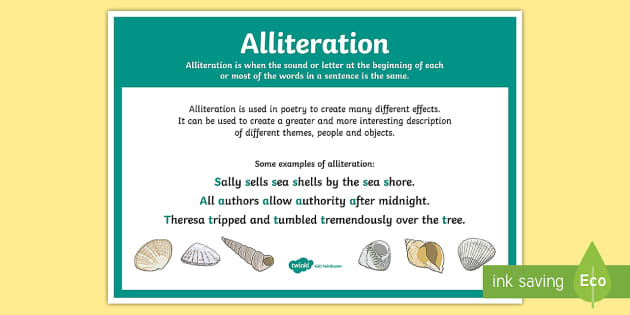



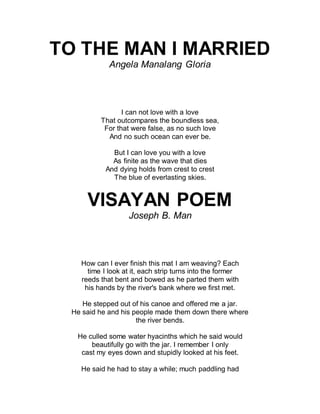

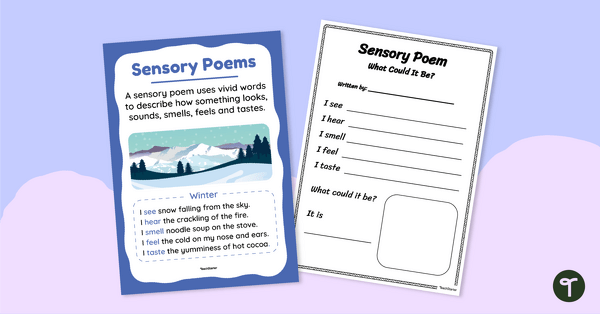



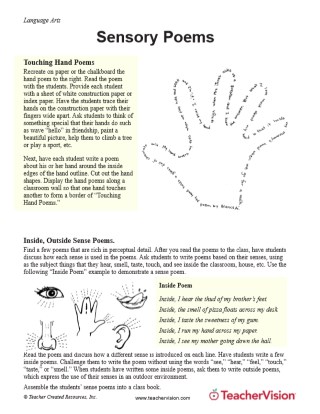



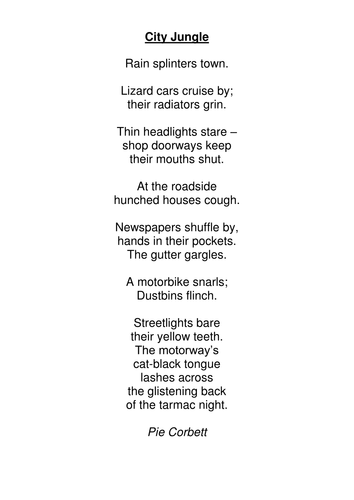
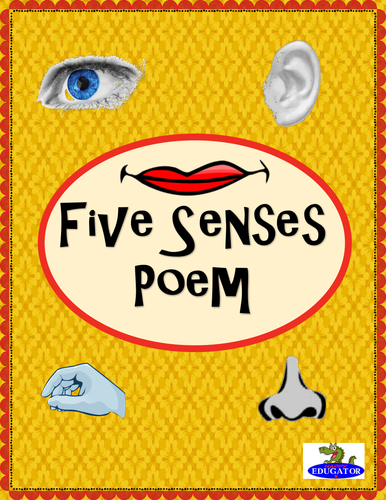

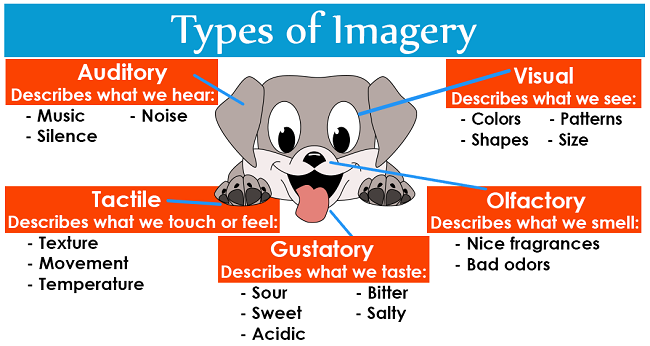







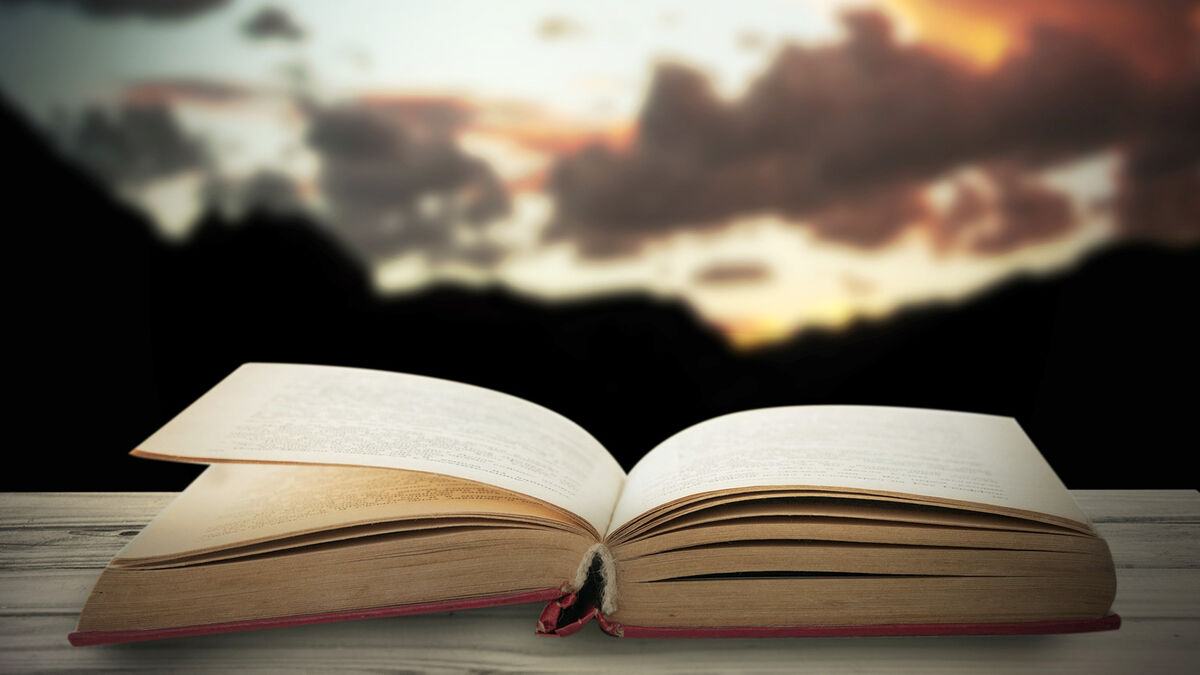


0 Response to "42 sensory language in poetry"
Post a Comment